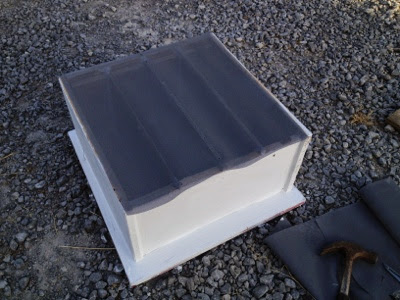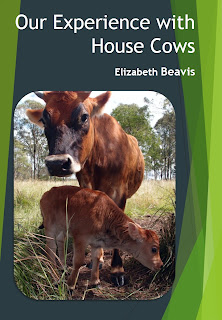I had removed the queen from hive #3 12 days ago and put her into a nuc box.
A few days later they had started to make a dozen queen cells. I didn't want to waste any of these cells as I really like this strain of bees. They are native black bees and I find them to be very docile and yet productive.
If I let them sort themselves out, the first queen that would emerge would kill all the other queens while in their cells. Such a waste of good virgin queens!
So I came up with a plan! I designed a four chamber mating box that Hubby helped me build.
It has the same dimensions as a brood box, so it can be used with national brood frames and a national roof.
Each chamber takes two frames comfortably and there is an entrance/exist hole, one on each side of the box, as can be seen from the top photo. So as to discourage drifting especially amongst the virgin queens.
There is mesh over each chamber, so I can inspect sections individually and so that the bees cannot access other sections.
This morning I opened up hive #3 and with a knife I started to cut generously around some of the capped queen cells. They are 12 days old and are due to hatch at 16 days.
I placed the mating nuc on the stand of the original hive and divided up the frames and bees between the four sections. Each section got one frame of stores and one frame of capped brood. I then took a cut out queen cell and very carefully wedged it between the two frames, like in the photo below. I was glad that the spacing was generous as had I made it a tight two frame fit, I would have been unable to place a queen cell easily between the frames. The bees immediately started to 'roar' when I moved them, but stopped when I returned the queen cells. One of the chambers received the frame that had a dozen queen cells minus the few I had cut away. I am worried that due to drifting, some chambers will not have enough bees to keep the queen cells warm and look after the queens when they hatch.
When I checked them this evening, there was activity at all four entrances and when I took off the lid, there was an even amount of bees between the chambers. Hope it says like this!
This is experimental for me, but it could be very rewarding to have 4 mated queens in a few weeks.
We plan to experiment with a perone style hive if this mating nuc box works out.





















